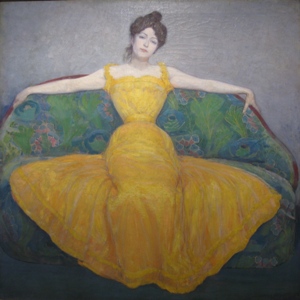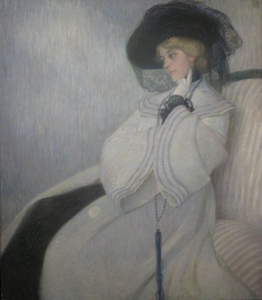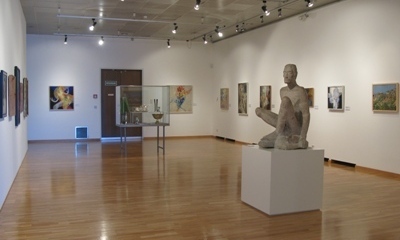VIENNA AROUND 1900
Dream and Reality

The collision of tradition and modernity in Vienna around 1900 created an unusually fertile climate for the arts and sciences. The economic boom had produced a new elite of entrepreneurs and intellectuals, manyof whom had Jewish origins. The productivity of artirsts and scientists benefited from bourgeois patrons and intellectual association.
In literature, Hugo von Hofmannsthal, Aurthur Schnitzler and others bore witness to the end of an era and its society. In music, on the other hand, composers such as Gustav Mhler and Arnold Schönberg set out to conquer new terrains. Sigmund Freud’s work in psycho-analysis provided an important source of innovation, as did the controversial ideas of the architect Adolf Loos. Founded in 1897 under the leadership of Gustav Klimt, the association of artists known as “The Secession” defended the value of contemporary artistic creation with the slogan: “To the age its art, to art its freedom” [“Der Zeit ihre Kunst, der Kunst ihre Freiheit”].
Throught the production of luxurious arts-and-crafts articles, the designers of the Wiener Werkstätte sought to transform modern daily life in to a “Gesamtkunstwerk”, or a total work of art. The provocative expressionism of Egon Schiele and Oskar Kokoschka appreared to many of their contemporaries as a disruptive factor in an apparently well-ordered world. In reality however, this order had broken down long ago.



20TH CENTURY ART
Insight #2
The Twenties

After World War I, Vienna, now the capital of a micro state, had lost both in political and economic significance. The ensuing social crisis left its mark on the city’s cultural life as well.
In contrast to Austrian art around 1900 which had been of world class, painting and sculpture of the interwar period were characterized by stylistic uncertainty and epigonism. Moreover, after the deaths of Gustav Klimt and Egon Schiele in 1918 and Oskar Kokoschka’s move to Germany, 1920, Vienna also lacked the artistic forces to provide the necessary stimulus.
Far away from the centers of European art such as Paris and Berlin, some artists continued to focus on Expressionism albeit in a more modest form – e.g. Hrbert Boeckl, Anton Faistauer or Gerhart Frankl.
The reception of Cubism, Futurism and Constructivism took place with some delay. Although these experimental trends were strongly communicated by the art pedagogue by the art pedagogue Franz Cizek the Vienna Kietism developed by his female students as a result of his teaching – among them Erika Giovanna Klien and My Ullmann – was hardly noticed by the public.
Also entirely new internation trends such as Surrealism and Neue Sachlichkeit (New Objectivity) did not succeed in taking hold in Vienna and resonated at best in an attenuated or modified form in the works of such solitary artists as Albert Paris Gütersloh or Franz Howanietz.



